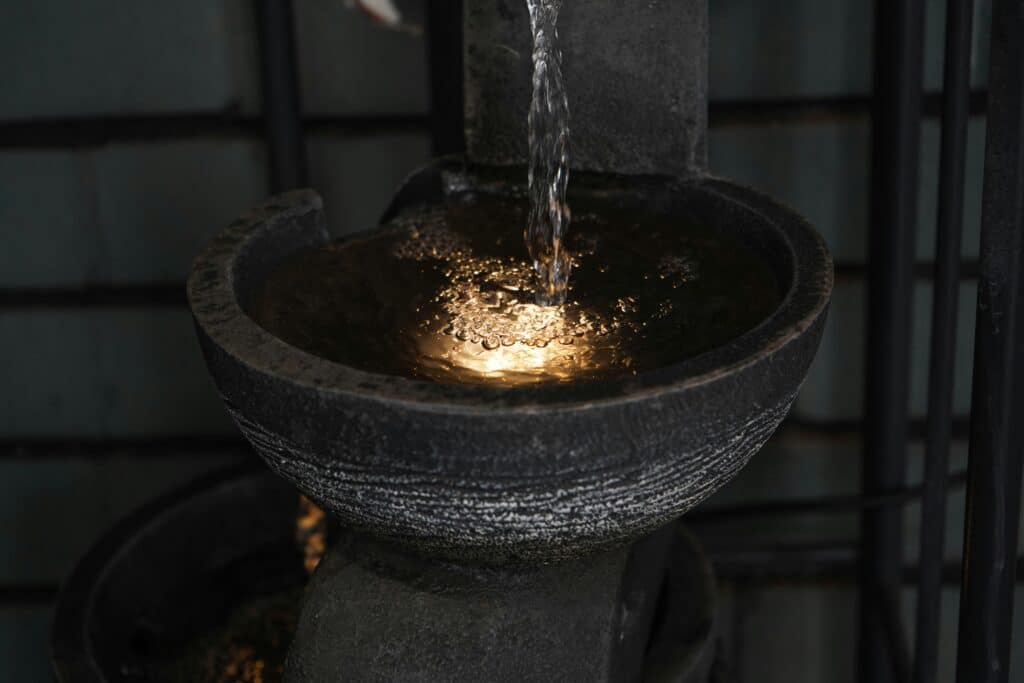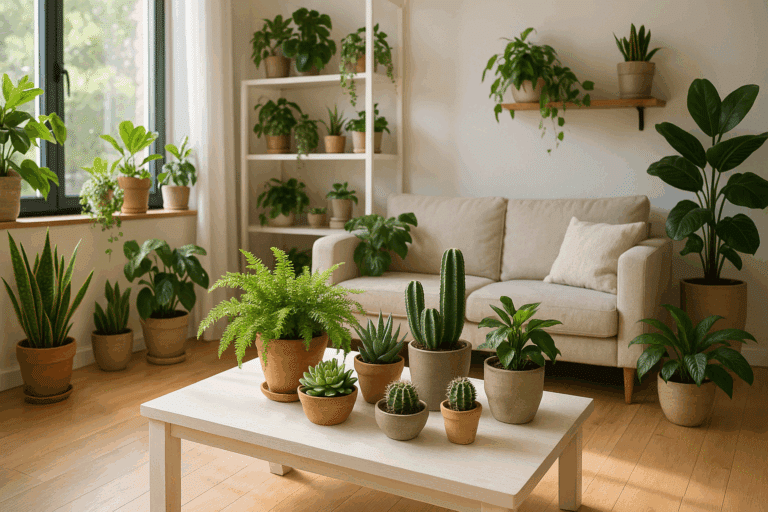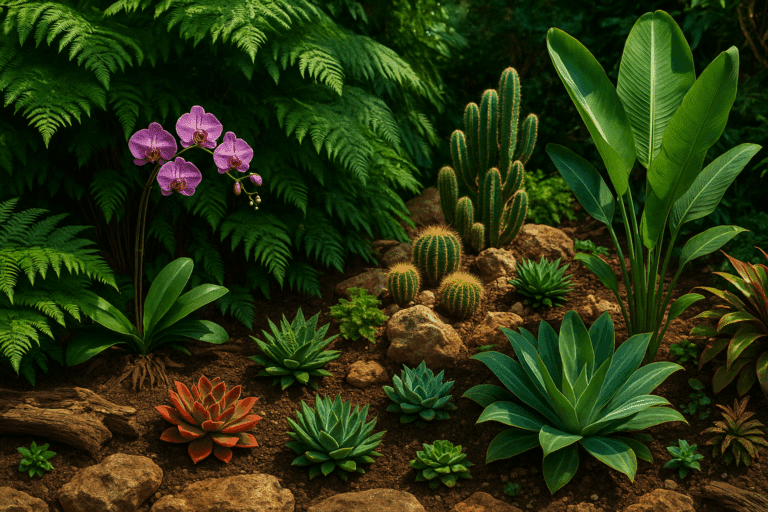In this deep dive, the focus will be on this stunning plant, known not just for its aesthetic appeal, but also for its adaptability to low-light environments.

The Calathea Movement Plant, also known as the ‘Living Plant,’ boasts decorative leaves that exhibit a captivating rhythmic movement. In the upcoming sections, we’ll be discussing its extraordinary characteristics, its intricate dance, and how it makes every space it inhabits come alive.
Moreover, the guide will also shed light on how the Calathea Movement Plant makes for an ideal choice for indoor plant enthusiasts. Its preference for low-light conditions and minimal maintenance requirements make it a perfect companion for those who are looking to bring a touch of nature into their homes or offices.
In addition, we’ll also delve into the easy care instructions and tips to keep your Calathea thriving. From watering to repotting, and even to the best type of potting mix to use, we’ve got you covered.
Finally, we will explore the symbolism and cultural significance of the Calathea Movement Plant. While it’s a beauty to behold, it’s worth noting that this plant holds deeper meanings in various cultures. So, stay with us, as we unfold the allure and charm of the Calathea Movement Plant. Let’s delve into the world of this stunning specimen and discover how it can transform your space into a soothing, lively, and elegant haven.
Calathea: A Perfect Indoor Plant
The Calathea Movement plant is a true marvel of nature. It is a unique type of plant primarily renowned for its strikingly ornate leaves and impressive adaptability to low-light environments, making it an excellent choice for indoor decorations.
Calathea offers a blend of beauty and functionality that is hard to match. It adds character and vitality to any interior, whether it’s a modern apartment, cozy office, or a lush indoor jungle. Its responsive behavior to environmental cues, vibrant leaf patterns, and ability to thrive without direct sunlight make it an ideal plant companion for urban dwellers and plant beginners alike.
Calathea’s Unique Attributes
Belonging to the Marantaceae family, the Calathea plant is native to tropical regions of the Americas. It is primarily known for its fascinating circadian rhythms. The plant’s leaves respond to light changes throughout the day, opening in the presence of light, and closing when it becomes dark. This daily movement, reminiscent of hands folded in prayer, is what has earned it the nickname “prayer plant,” although true prayer plants technically refer to those in the Maranta genus.
Each variety of Calathea boasts its own unique leaf markings and colors, often appearing as though hand-painted by an artist. The foliage can include rich greens, soft purples, silvers, creamy whites, and even bold pinks, depending on the cultivar. Popular varieties like Calathea orbifolia, Calathea lancifolia (Rattlesnake Plant), and Calathea roseopicta are known for their distinct leaf forms and elaborate markings.
Aside from visual appeal, Calatheas are non-toxic to pets and children, unlike many other popular houseplants. This makes them a safe choice for family homes, particularly where cats or dogs might be prone to nibbling on greenery.
Light and Placement Considerations
Calatheas are known for being shade-tolerant, which makes them suitable for rooms that lack intense natural light. They are native to forest floors where dappled sunlight filters through the canopy above. Mimicking these conditions indoors is key to the plant’s success.
Ideal lighting for Calathea includes indirect or filtered light. Direct sun exposure, even for a few hours, can lead to sunburned leaves, often seen as faded color, brown spots, or crispy edges. The plant will do well placed near an east-facing window or in a room with sheer curtains that soften harsh afternoon rays.
If natural light is limited, Calathea can also adapt to artificial lighting. Full-spectrum LED grow lights can provide sufficient support for its growth and leaf vibrancy when placed close enough to the plant.
Rotating the plant every week or so helps ensure even exposure to light, preventing lopsided growth or leaning.
Watering Requirements and Techniques
Calathea plants appreciate consistent moisture but are very sensitive to overwatering. The trick is to maintain a balance where the soil is moist but never soggy. Overly wet soil can lead to root rot, while dry conditions can cause the leaves to curl or become brittle.
Watering frequency should be adjusted according to the season and environment. During the growing season (spring through early autumn), the plant may need water every 5–7 days. In winter, reduce watering slightly as the plant’s growth slows.
Using filtered or distilled water is recommended, as Calatheas are sensitive to fluoride and other chemicals often found in tap water. These impurities can cause browning edges or leaf tips. Collecting rainwater or allowing tap water to sit overnight before use can also reduce the risk of damage.
Soil and Repotting Needs
Calatheas thrive in well-draining, slightly acidic to neutral soil that retains some moisture without staying wet. A recommended potting mix includes peat moss or coco coir for moisture retention, perlite or pumice for drainage, and a bit of compost for nutrients.
A general indoor tropical plant mix with added perlite works well for most Calatheas. Avoid heavy, compacted soils, as they can trap water around the roots and suffocate the plant.
Repotting is generally required every 1–2 years, typically in the spring. During this time, the plant can be upgraded to a slightly larger pot to accommodate root growth and given fresh soil to replenish nutrients. Be gentle when handling Calathea roots, which are fine and delicate.
Humidity and Temperature Preferences
Humidity is crucial to Calathea health. These plants thrive in environments with 50–70% humidity, which mimics the damp, tropical regions they originate from. In homes where the air is dry—particularly during winter—Calathea leaves can become crispy or curled at the edges.
Raising the humidity can be accomplished through several means:
Using a humidifier near the plant
Grouping multiple plants together to create a microclimate
Placing the pot on a tray filled with water and pebbles
Misting the leaves occasionally (though not excessively, to avoid fungal issues)
Ideal temperature ranges for Calathea are between 65°F and 80°F (18°C to 27°C). Sudden drops in temperature, drafts, or exposure to cold windowsills can cause stress and lead to leaf yellowing or droopiness. Avoid placing them near air conditioners or heating vents.
Troubleshooting Calathea Problems
Even with careful care, Calathea may encounter some common issues. Recognizing these signs early will help correct problems before they become severe.
Curling Leaves
This is often a sign of underwatering, low humidity, or too much light. Ensure the soil remains moist and the humidity levels are adequate.
Browning Edges or Tips
This can be caused by fluoride or chlorine in tap water, low humidity, or inconsistent watering. Switching to filtered water and maintaining high humidity usually improves this condition.
Yellow Leaves
Typically a result of overwatering or poor drainage. Make sure the pot has proper drainage holes and avoid watering until the top inch of soil feels dry.
Drooping Leaves
This may indicate that the plant is either too dry or too wet. Check the soil moisture level and adjust watering accordingly.
Pest Infestations
Although not highly prone to pests, Calatheas can attract spider mites, aphids, or fungus gnats in poor conditions. Keeping humidity high, wiping the leaves regularly, and inspecting the plant can help prevent infestations. In the event of pests, neem oil or insecticidal soap is effective when applied consistently over several days.
Fertilizing Calathea for Optimal Growth
Calathea does not require heavy feeding. A balanced liquid fertilizer diluted to half strength can be applied every 4–6 weeks during the growing season. Avoid overfertilizing, as this can lead to salt buildup in the soil and damage the roots.
Organic fertilizers such as worm castings or fish emulsion can also be used sparingly. These provide a gentler nutrient boost and are less likely to cause chemical burns.
Flush the soil with plain water every few months to remove any accumulated salts or residue from fertilizers, especially in plants that are not repotted regularly.
Propagation and Growth Habits
Propagation of Calathea is typically done through division during repotting. Since the plant grows in clumps, you can gently separate sections of the root system, ensuring that each division includes several healthy leaves and roots. These new plants can be potted individually and cared for just like the parent plant.
It’s best to propagate in spring or early summer when the plant is actively growing. Keep the divisions in a warm, humid area until established, and avoid overwatering during the initial adjustment period.
Calathea does not usually grow rapidly, but with the right conditions, it can become quite full and lush over time. Regular pruning of dead or yellowing leaves encourages fresh growth and helps maintain the plant’s appearance.
Calathea’s Low Light Tolerance
Calathea’s adaptability to low-light environments makes it particularly suited for indoor settings. This plant thrives under indirect sunlight, making it perfect for spaces within homes or offices where direct sunlight is scarce.
Maintaining Optimal Light Conditions
For the Calathea to maintain its vibrant leaf color and patterns, it requires a delicate balance of light. Too much light can cause leaf burn, while too little light can lead to loss of color vibrancy. The best practice is to place your Calathea near a north-facing window or another location where it can receive a fair amount of indirect light. It is advisable to avoid placing your Calathea under direct sunlight, as this could cause damage to its leaves.
Decorative Versatility of Calathea
The Calathea plant’s versatility in terms of aesthetics is second to none. With over 300 different species, each with its unique leaf pattern and color combination, the Calathea offers a myriad of options to add an exquisite touch to any indoor setting.
Options for Display
- Pot Display: The Calathea plant is commonly displayed in pots, where its broad leaves and compact size allow it to make a bold statement without taking up too much space.
- Terrariums: Due to its tropical origins and love for humidity, the Calathea plant is an excellent choice for terrariums, adding a vibrant touch of green to your indoor space.
Calathea Plant Care
While the Calathea plant is relatively easy to care for, it does require some attention to maintain its beauty.
Watering Requirements
Calathea plants prefer a moist environment, so it’s crucial to keep the soil lightly moist at all times. Overwatering or underwatering can lead to browning of leaves, so it’s best to water the plant when the top 1 inch of soil dries out.
Humidity and Temperature
Being a tropical plant, Calathea loves a humid environment. It thrives in humidity levels of 50% or higher. Maintaining a room temperature between 65 and 85 degrees Fahrenheit is ideal.
Calathea and Air Purification
In addition to its ornamental appeal, Calathea also plays a functional role in improving indoor air quality. NASA’s Clean Air Study identified plants from the Marantaceae family as efficient air purifiers, capable of removing toxins such as benzene and formaldehyde from the air.

In essence, adding a Calathea plant to your indoor space not only enhances its aesthetic appeal but also contributes to a healthier and cleaner living environment. Whether you’re an avid plant lover or a novice looking to add a touch of green to your indoor space, the Calathea Movement plant is a perfect choice.
Conclusion
In conclusion, the Calathea Movement Plant is a game-changer for both experienced and novice gardeners, particularly those looking for a low-maintenance, low-light loving plant. Its stunning decorative leaves add an air of elegance to any room, effortlessly enhancing the overall aesthetic appeal. Not only does it thrive in less lit spaces, but its distinctive leaf movements also provide a unique dynamic, almost like a living piece of art.
This plant, with its remarkable adaptability, can transform even the most mundane spaces into a serene oasis. It’s not just a plant; it’s a decorative statement that brings the beauty and tranquility of nature indoors. With its impressive leaf patterns and colours, it creates a focal point that demands attention.
The Calathea Movement Plant is not just for plant enthusiasts but for anyone seeking to add a touch of sophistication to their home or office. Its forgiving nature makes it an ideal choice for those new to plant parenting. With a little care and attention, it rewards with a stunning display that can’t be rivalled. So, whether you’re a seasoned gardener or just starting your plant journey, the Calathea Movement Plant is a must-have addition to your indoor plant collection.



